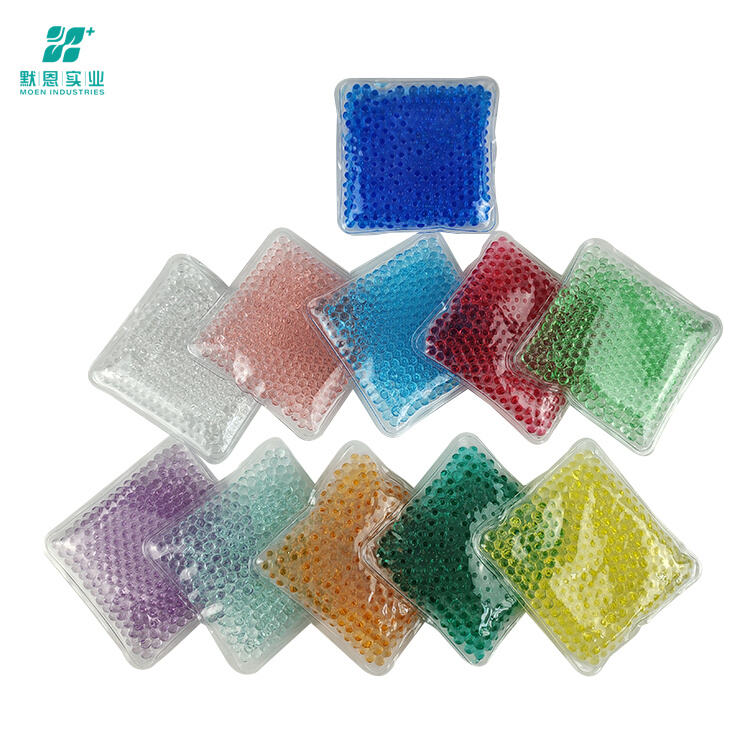Core Components of Instant Ice Packs
Ammonium Nitrate: The Primary Reactant
Ammonium nitrate is basically what makes those instant ice packs work so well, thanks mainly to how easily it mixes with water and conducts heat away quickly. When mixed into solution, the stuff actually pulls heat out of whatever it touches, which causes temperatures to plummet pretty fast. That's why people rely on these packs when dealing with injuries or swollen areas they need to cool down immediately after sports accidents or other mishaps around the house. Research shows that ammonium nitrate drops temps faster than most alternatives available today, which explains why doctors still stock them alongside regular ice bags in clinics and hospitals across the country.
Calcium Ammonium Nitrate: A Safer Alternative
Calcium ammonium nitrate has become a go to replacement for regular ammonium nitrate when making instant ice packs. While it still delivers that same cold feeling people need after an injury, there's way less chance of harmful effects or skin problems. That's why lots of companies choose this formula especially when designing products for kids or anyone with delicate skin conditions. Chemical safety groups have tested it extensively and found basically no toxic properties, which explains why so many manufacturers trust it these days. Lower toxicity means more people can safely use these ice packs whenever needed without worrying about side effects, all while getting the same quick cooling action they expect.
Urea-Based Formulas: Low-Risk Cooling Agents
Urea shows up in some instant ice packs too, mainly because people consider it pretty safe stuff when it comes to cooling things down. What makes urea work so well is that it mixes easily with water and creates this nice chill effect right away, which explains why manufacturers love putting it in those little portable packs everyone carries around. The cold lasts about the same amount of time as most other ingredients used in these products, giving folks actual relief without worrying about any major side effects. Most users report no problems after using urea-based packs, and plenty of lab tests back up these claims, making urea one of the go-to options for companies looking to offer something both effective and reasonably safe in their line of cooling products.
Water Activation Systems
The water activation system plays a key role in how instant ice packs work, triggering the chemical process that makes things get cold fast. Squeezing the pack releases water inside which mixes with chemicals stored separately, causing temperatures to drop almost instantly. These modern systems beat regular ice packs hands down when it comes to how quickly they cool stuff down. Some packs might chill faster than others depending on their design, but overall they're much quicker to activate and easier to carry around compared to old fashioned ice packs that need freezing first. That's why so many first aid kits now include these instead of traditional options, especially for situations where getting something cold right away matters most.
Chemical Reactions Behind Instant Cooling
Endothermic Reactions Explained
Instant ice packs work because of something called endothermic reactions. Basically, these reactions suck up heat from around them, which makes things get colder right where they happen. When we look at what's happening chemically, it turns out that breaking certain bonds in the chemicals actually requires energy, and that's why we feel the cold. The math behind all this might seem complicated at first glance, but once people see how simple concepts apply to real world stuff like ice packs, it starts making sense even if they aren't chemistry experts. Textbooks and websites usually walk through these energy changes step by step, helping everyone grasp why those little packs become so icy when activated.
Activation Methods: Squeeze, Snap, and Shake
The way we activate instant ice packs matters quite a bit for getting them cold fast. Most methods break some kind of internal wall so water mixes with chemicals inside, starting that cooling action. When someone squeezes one, it's pretty simple but might take a good grip sometimes. The snap method works by folding the pack back and forth until there's a distinct popping sound that tells us it's working. People love this one because it feels so intuitive. Shaking around the pack after opening makes sure everything gets mixed properly, leading to better temperature control overall. Looking at what folks actually say about their experiences, most agree these different ways work well enough for everyday needs without too much hassle involved.
Temperature Duration Factors
What makes instant ice packs cool for different lengths of time? A few key things matter here: how much reactant is inside, what the outside temperature is like, and how well the pack stays insulated from heat. Packs with higher concentrations tend to stay cold longer, though this isn't always the case when temperatures fluctuate around them. Good insulation really helps too, keeping that chill going strong even after sitting in a pocket or bag. Most people find these packs work best within certain time frames depending on where they're used. Researchers have looked at how these little packs perform temperature-wise, which tells us why some last minutes while others hang on for hours. For folks making these products and those who need quick cooling solutions, understanding these variables makes all the difference between a good experience and one that leaves them wanting more.

Safety and Toxicity Concerns
Risks of Accidental Ingestion
Those instant cold packs come with some serious hidden dangers because of what's inside them, particularly when someone gets ahold of them by accident. The main ingredients like ammonium nitrate, calcium ammonium nitrate stuff, and urea aren't exactly harmless. Ammonium nitrate stands out as really problematic. When people swallow it, they might feel dizzy, tired, or get headaches since it messes with blood vessels and affects red blood cells. There's even a thing called methemoglobinemia that happens sometimes where blood can't carry oxygen properly anymore. If this stuff gets into the body, health experts suggest washing out the mouth right away and then drinking plenty of water to help flush it out. Poison Control Centers are always available at any hour for emergencies like this. Take the case of a kid who ate the gel from one of these packs last year. He had some pretty bad stomach pains but recovered after treatment. These stories remind us why we need to keep these products out of reach and act fast if there's ever an accident.
Skin Exposure Protocols
Getting skin exposed to chemicals inside those instant ice packs can cause irritation, so it's best to deal with it right away. Most dermatologists suggest washing the area thoroughly with soap and water as soon as possible after contact. How bad things get depends on how much skin was actually touched. A little bit of contact usually clears up just fine with some good old fashioned scrubbing, but if there's been serious exposure, then extra steps may be needed. People who have used these ice packs report all sorts of skin reactions pretty regularly, though most cases aren't too bad once cleaned properly. To stay safe, always check the pack before use for any signs of leakage and stick to the manufacturer's directions. Throw out any damaged packs immediately since they pose a bigger risk. Following these basic safety tips makes a world of difference in preventing problems down the road.
Child Safety Guidelines
Keeping kids safe around instant ice packs means getting products meant for their age group and keeping a close eye on them while they're using these things. Parents should teach children about the dangers involved and show them how to handle ice packs properly without breaking them open or putting anything inside their mouths. Good practice starts with picking ice packs made specifically for children, since these usually contain safer materials that won't hurt if somehow ingested accidentally. Research shows that sticking to safety rules really works wonders in cutting down accidents. Just watch what the kids are doing and keep those ice packs somewhere they can't grab them unsupervised. Take the story of little Timmy who got into his mom's ice pack last summer as proof why this matters so much. With someone watching over him at all times, he never ended up needing medical attention despite his curious nature toward cold stuff.
FAQ
What makes ammonium nitrate effective in instant ice packs?
Ammonium nitrate's solubility and capacity to undergo endothermic reactions when dissolved in water make it highly effective for rapid cooling, providing fast relief for swelling or injuries.
Are there safer alternatives to ammonium nitrate?
Yes, calcium ammonium nitrate and urea are considered safer alternatives with similar cooling effects while reducing risks of toxicity and skin irritation.
How does water activation work in instant ice packs?
Water activation involves squeezing the pack to release water that mixes with the chemical reactant, starting an immediate cooling reaction.
What are the potential risks of accidental ingestion?
Accidental ingestion can lead to symptoms like dizziness, headache, and more serious conditions if not addressed promptly by following recommended emergency protocols.
How can I safely use instant ice packs for children?
Ensure to choose non-toxic, age-appropriate products and supervise children closely to prevent accidental ingestion or misuse.

